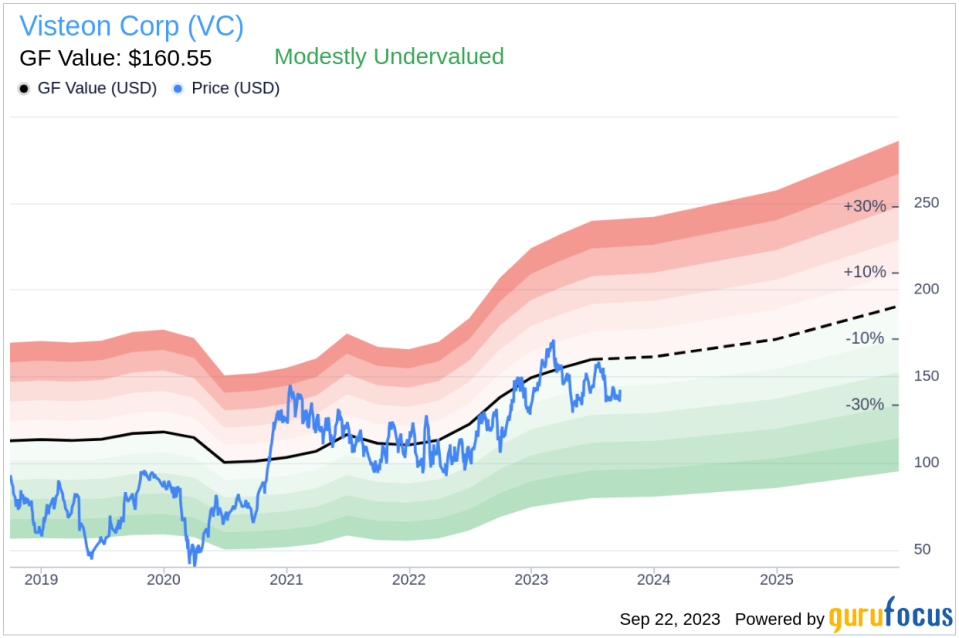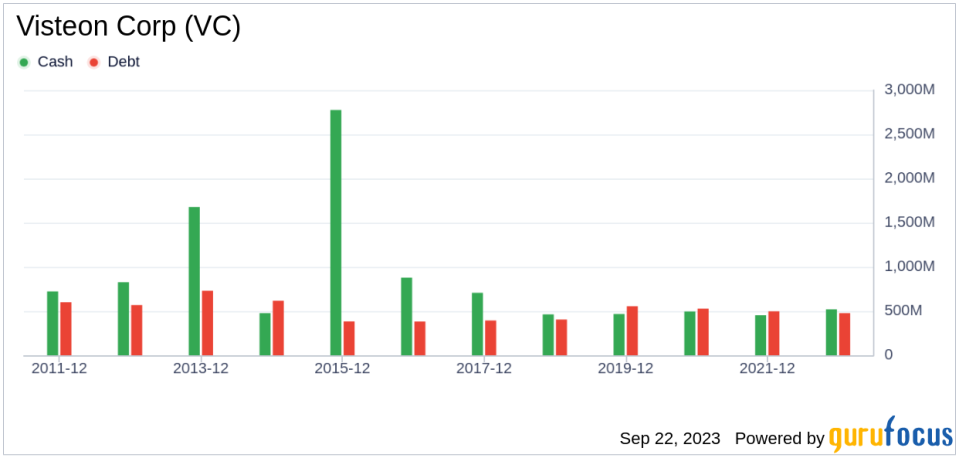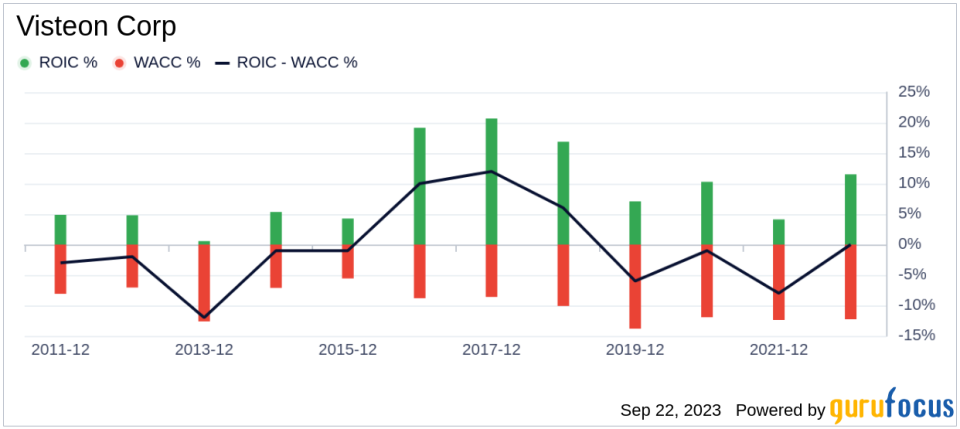Unveiling Visteon (VC)'s Value: Is It Really Priced Right? A Comprehensive Guide
Visteon Corp (NASDAQ:VC), a leading automotive supplier, experienced a daily gain of 5.08%, contrasting with a 3-month loss of -3.02%. With an Earnings Per Share (EPS) (EPS) of 4.6, the question arises: Is Visteon (NASDAQ:VC) modestly undervalued? This article provides an in-depth analysis of Visteon's valuation, inviting readers to delve into the financial intricacies of this stock.
A Snapshot of Visteon Corp (NASDAQ:VC)
Visteon Corp (NASDAQ:VC) is a renowned automotive supplier, manufacturing electronics products for original equipment vehicle manufacturers, including Ford, Nissan, Renault, Mazda, BMW, General Motors, and Honda. The company's offerings range from information displays, instrument clusters, head-up displays to infotainment systems, telematics solutions, and Smartcore. Visteon operates in North America, Europe, China, Asia-Pacific, and South America.

Understanding the GF Value
The GF Value is a unique measure of a stock's intrinsic value, calculated based on three factors:
Historical multiples (PE Ratio, PS Ratio, PB Ratio, and Price-to-Free-Cash-Flow) that the stock has traded at.
GuruFocus adjustment factor based on the company's past returns and growth.
Future estimates of the business performance.
The GF Value Line represents the fair value at which the stock should be traded. If the stock price is significantly above the GF Value Line, it is overvalued, and its future return is likely to be poor. Conversely, if it is significantly below the GF Value Line, its future return will likely be higher.
At its current price of $142.44 per share and a market cap of $4 billion, Visteon (NASDAQ:VC) is estimated to be modestly undervalued. This suggests that the long-term return of its stock is likely to be higher than its business growth.

Link: These companies may deliver higher future returns at reduced risk.
Assessing Visteon's Financial Strength
Before investing in a company, it's crucial to evaluate its financial strength. Companies with poor financial strength pose a higher risk of permanent loss. A great way to understand a company's financial strength is by looking at the cash-to-debt ratio and interest coverage. Visteon's cash-to-debt ratio stands at 0.97, ranking better than 59.66% of 1227 companies in the Vehicles & Parts industry. Visteon's overall financial strength is 7 out of 10, indicating fair financial health.

Profitability and Growth
Companies that have been consistently profitable over the long term offer less risk for investors. Higher profit margins usually dictate a better investment compared to a company with lower profit margins. Visteon has been profitable 8 over the past 10 years. Over the past twelve months, the company had a revenue of $4 billion and Earnings Per Share (EPS) of $4.6. Its operating margin is 5.62%, which ranks better than 56.42% of 1262 companies in the Vehicles & Parts industry. Overall, the profitability of Visteon is ranked 7 out of 10, indicating fair profitability.
Growth is probably the most important factor in the valuation of a company. A faster-growing company creates more value for shareholders, especially if the growth is profitable. The 3-year average annual revenue growth of Visteon is 8.1%, which ranks better than 58.44% of 1203 companies in the Vehicles & Parts industry. The 3-year average EBITDA growth rate is 10.3%, which ranks better than 57.01% of 1077 companies in the Vehicles & Parts industry.
ROIC vs WACC
Return on invested capital (ROIC) measures how well a company generates cash flow relative to the capital it has invested in its business. The weighted average cost of capital (WACC) is the rate that a company is expected to pay on average to all its security holders to finance its assets. If the ROIC is higher than the WACC, it indicates that the company is creating value for shareholders. Over the past 12 months, Visteon's ROIC was 13.61, while its WACC came in at 11.69.

Conclusion
In conclusion, Visteon Corp (NASDAQ:VC) is estimated to be modestly undervalued. The company's financial condition is fair, and its profitability is fair. Its growth ranks better than 57.01% of 1077 companies in the Vehicles & Parts industry. To learn more about Visteon stock, you can check out its 30-Year Financials here.
To find out the high-quality companies that may deliver above-average returns, please check out GuruFocus High Quality Low Capex Screener.
This article first appeared on GuruFocus.
